News
October 2025
ISAPD Announces ARCHTOBER 2025 Theme
Join us for the ‘Thinking/Being/Designing for the Collective’ series, developed in collaboration with the New York Center for Architecture. Drawing inspiration from Archtober 2025’s theme of “Shared Spaces,” join ISAPD to imagine a world where space and resources are shared responsibly and reciprocally. As we respond to the complex collective experience in 2025: learn Indigenous principles to re-establish a cyclical and renewable relationship with the environment, develop material conditions where communities can unite across separation, reflect on the role that reconciliation plays in rethinking spaces for diplomacy, and focus on design practices and tools where cultural lineages and lived histories intersect.
Find event information and links to sign up under the “Events” tab and on the Archtober website.
June 2025
Meet the Team: Design Assistant, Naima Blanco-Norberg
Naima Blanco-Norberg is a multimedia artist, filmmaker, athlete, organizer, writer, and recent graduate of Yale University with a BA in Architecture. She was born and raised on Ramaytush Ohlone Land, Yelamu (known to some as San Francisco, CA) to a mixed family that is deeply rooted in their Méxica, Xicano/a and Native tribal communities of wider California and the West Coast.
Her work and design passions center cultivating community space, uplifting Indigenous design principles, and empowering people through culture and arts. Her senior design project was a Seed Library and Propagation Center. The project grounded seed keeping as community building amongst Indigenous and immigrant communities.
She considers herself an artist and learner first and foremost, drawing immense inspiration from the activist and muralist communities she grew up within. Naima has always found herself inspired to design physical spaces for people to gather, be in solidarity, and honor the land. She loves learning about community histories, family genealogies, and environmental relations -- and has found herself employing those in her art, architecture, paintings, and films.
She will be joining ISAPD as a Design Assistant to support our team over the summer. Over the next year she will also be completing an architecture fellowship at Native Roots Network designing a Community Resiliency Center for Indigenous tribes in Northern California with the support of the Cohen Public Service and Gordon Grand Yale Postgraduate Fellowships. Naima is dedicated to continuing work in Indigenous and community-led design in the future.
May 2025
Meet the Team: Researcher, Dagny Elise Carlsson
Dagny Elise is a Researcher for ISAPD supporting data curation and analysis for Page’s Indigenous Land Acknowledgement Tool (PILAT).
Dagny Elise Carlsson is a rising third-year dual master's candidate in Architecture and Landscape Architecture at the University of Pennsylvania. Dagny Elise is a citizen of the Cherokee Nation and the Shawnee Tribe, and as a Weitzman Scholar she draws on this background to develop and diversify her own practice. Dagny Elise’s research interests are focused on reciprocal co-design strategies and storytelling in Indigenous American architectural practices; before Penn, she led Stanford University's first course on Indigenous architecture, “CEE 32XSI: Sustainable Design and Practice in Native American Architecture.”
February 2025
ISAPD Work Featured on Page’s Good Indigenous Room Podcast
“Spaces tell stories—and Indigenous design carries histories, traditions, and cultural knowledge that connect generations. In this episode of The Good Room podcast, Page Designer Anjelica S. Gallegos and Operations Director Nitish Suvarna explore how Indigenous design principles honor site histories, strengthen community ties, and create spaces that are not only sustainable but deeply rooted in identity.
From land acknowledgment to architectural reciprocity, they discuss how Indigenous perspectives shape design, ensuring that built environments reflect the voices, needs, and ecological wisdom of the communities they serve.”
Listen to The Good Indigenous Room podcast, hosted by Page Storyteller Tully Mahoney:
🎙️ YouTube: https://lnkd.in/gf6NJsNn
🎙️ Spotify: https://lnkd.in/gnBqAEks
🎙️ Apple: https://lnkd.in/ggCzMaMw
January 2025
ISAPD Announces Project with the Page Foundation at Partners
The Page Foundation has funded a new research initiative called, Page’s Indigenous Land Acknowledgement Tool or PILAT, in partnership with the Indigenous Society of Architecture, Planning, and Design (ISAPD) and partners. More information will be coming soon.
Listen to a preview on Page’s Good Indigenous Room podcast linked above.
November 2024
ISAPD Launches the Living Earth Challenge with the Lo-TEK Institute
The Living Earth Challenge is a collaborative initiative put together by the Lo—TEK Institute and the Indigenous Society of Architecture, Planning and Design (ISAPD). The Challenge seeks to restore and strengthen an individuals’ knowledge of a specific environment and encourages the creation of imaginative built designs that give back to the natural environment. The Living Challenge will guide you through the steps of creating a Site Profile, Sentient Framework, and Plan of Action to design and build a structure that tells a Story of Reciprocity.
Read more about the Challenge on the Resources page.
October 2024
ISAPD Supports the American Society of Landscape Architect’s 2024 Call to Action: Co-Create a Future that Heals Land and Culture
Announced at the ASLA 2024 Conference on Landscape Architecture in Washington, D.C.
The Call to Action was developed by a team of Indigenous and non-Indigenous partners including Julia Watson, Lyla June Johnston, José de Jesús Leal, Katie Riddle, Jared Green, and ISAPD Director, Anjelica S. Gallegos.
The ASLA invites members to “Respect Indigenous Knowledge, Empower Future Generations, and Engage with ASLA”. They invited members to “help us build an Indigenous landscape architects' network of ASLA members and work in collaboration with groups like the Indigenous Society of Architecture, Planning, and Design”.
Read the Call to Action in full here:
https://www.asla.org/healinglandandculture.aspx
September 2024
ARCHTOBER PROGRAM RELEASED: ISAPD Mentioned
“Archtober, NYC’s Architecture and Design Festival, Launches 14th Year.
The 2024 festival lineup—featuring events, self-guided experiences, and participating organizations—is taking shape under the theme Tracing the Future.
“Tracing the Future is an invitation to explore how our architectural choices today will define tomorrow’s New York,” says Katie Mullen, Director of Archtober and Director of Exhibitions and Programs, Center for Architecture. “This year’s festival is a call to action for innovators and creatives to rethink established practices and explore new possibilities in improving our built environment.”
We hope to spark dialogue and inspire collaboration among architects, designers, urban planners, and design enthusiasts alike, fostering inclusivity within innovation. Programming within this umbrella includes the discussion Indigeneity and Traditional Ecological Knowledge in Spatial Practices, developed in collaboration with the Indigenous Society of Architecture, Planning and Design (ISAPD), on Thursday, October 10, 6:00–8:00 pm at the Center for Architecture. The Center for Architecture will also host the panel discussion Tracing the Future: Affordable Housing in NYC, on Monday, October21, 6:00–8:00 pm, featuring a selection of award-winning affordable housing projects from NYSERDA’s Buildings of Excellence competition, which funds developers and architects around New York State who demonstrate a commitment to reducing carbon emissions while also creating innovative and cost-effective housing.”
Read the Article in Full Here:
https://www.archtober.org/stories/archtober-nycs-architecture-and-design-festival-launches-14th-year
ARCHTOBER PROGRAM SERIES:
INDIGENEITY AND TRADITIONAL ECOLOGICAL KNOWLEDGE IN SPATIAL PRACTICES
Join us for a conversation organized in collaboration with the Center for Architecture + Archtober.
This event will convene distinguished guests to examine and discuss the intersection of Indigenous perspectives and the built environment—a realm where architecture, urban planning, and land use intersect with traditional ecological knowledge, cultural practices, and Sovereignty movements. The event will foster an interdisciplinary dialogue between researchers, practitioners, and policy makers influencing the realm of architecture, planning, and design.
Speakers:
Winona LaDuke, Founder, Winona’s Hemp & Heritage Farm
Julia Watson, Author, Lo–TEK: Design by Radical Indigenism
Wizipan (Wee-zee-pan) Little Elk Garriott, Principal Deputy Assistant Secretary – Indian Affairs in the U.S. Department of the Interior
Moderator:
Christian Hart Nakarado, Assistant Professor of Art, Wesleyan University; Founder, Slow Built Studio
About the Speakers:
Winona LaDuke: Winona LaDuke is one of the world’s most tireless and charismatic leaders on issues related to climate change, Indigenous rights, human rights, green and rural economies, grass-roots organizing, local foods, alternative sources of energy and the priceless value of clean water over a career spanning nearly 40 years of activism. https://www.winonaladuke.com/
Julia Watson: Julia Watson is an Australian born, award-winning author, educator, and landscape designer based in Brooklyn, New York. Watson is an expert on traditional and indigenous technologies and focuses her work at the intersection of anthropology, ecology and innovation. Her eponymously named studio foregrounds traditional knowledge, sustainability and nature-based innovation, while the Lo—TEK Institute launched in 2024, to foster climate and environmental literacy for scholars worldwide. Watson was named by Wallpaper* in 2023 and 2024, as one of the 300 people defining creative America, and is the 2024 recipient of the Institute of Classical Architecture and Art’s Arthur Ross Award for lifetime achievement in Education.
https://www.juliawatson.com/
Wizipan (Wee-zee-pan) Little Elk Garriott: Wizipan (Wee-zee-pan) Little Elk Garriott, an enrolled member of the Rosebud Sioux Tribe in South Dakota, is the Principal Deputy Assistant Secretary – Indian Affairs in the U.S. Department of the Interior. He was appointed to this role by Interior Secretary Deb Haaland in October 2021.
The Principal Deputy Assistant Secretary – Indian Affairs serves as the first assistant and principal advisor to the Assistant Secretary – Indian Affairs in the development and interpretation of policies affecting Indian Affairs bureaus, offices, and programs.
Prior to his appointment, Mr. Garriott served as chief executive officer from 2012 to 2021 of the Rosebud Economic Development Corporation (REDCO), an ecosystem of Tribal organizations serving the Rosebud Indian Reservation. In this capacity, Mr. Garriott led and started businesses and community-based programs, including a Native language immersion school and 1,500-head buffalo herd.
Christian Hart Nakarado: Christian grew up in the mountains outside of Golden, Colorado. He received his B.A. in Architecture from Yale College and his M. Arch from the Yale School of Architecture. He has spent the last 18 years working in practices on the east and west coasts of the United States, as well as in Canada and England. He is a licensed architect in New York, California, and Michigan, is a member of the American Institute of Architects (AIA) and the American Indian Council of Architects and Engineers (AICAE), and is an enrolled member of the Sault Ste. Marie Tribe of Chippewa Indians.
Currently an Assistant Professor of Art at Wesleyan University in Connecticut, Christian previously held positions at the Birmingham School of Architecture and Design, at Daoust Lestage in Montréal, at Sage and Coombe Architects in New York, and at Michael Maltzan Architecture in Los Angeles. His teaching and research both focus on impermanence in design and indigenous precedents for non-extractive making.
https://slowbuilt.com/
When: Thursday, October 10, 6pm EST
Where: Center for Architecture
Sign Up Here:
https://calendar.aiany.org/2024/10/10/indigeneity-and-traditional-ecological-knowledge-in-spatial-practices/
INDIGENOUS HOUSING + WORKING WITH COMMUNITIES
Indigenous Housing + Working with Communities is a lecture series developed in collaboration with the Center for Architecture + Archtober.
At the center of many Indigenous ideologies exists the inherent practice of planning - planning for seasonal change, planning for multiple generations, and planning for home place. Understanding these Indigenous planning principles often begins with understanding of multigenerational design, concept of community, interconnectedness, and stewardship. Many Indigenous communities begin by teaching these planning and design principles within the home. Homes carry a power to reinforce traditional cultural knowledge and Indigenous ideology in everyday practices. Indigenous values can guide better housing design practices for communities and inform inclusive and sustainable planning strategies. This lecture series shares successful methods of Indigenous engagement, tribal sovereignty, and self-determined approaches for Indigenous housing design.
Braiding Past, Present, & Future: Honoring Standing Rock Culture through Design
SAGE Development Authority is in the process of envisioning a cultural center on the Standing Rock Nation. The innovative project ensures the project is rooted in culture, ecology, and site. Growing up on Standing Rock, Celina Brownotter has a deep commitment to the community and the land. This presentation will explore community engagement strategies, environmental considerations, and the design process that guided the project. Attendees will learn about the challenges and successes of integrating traditional knowledge with contemporary design practices to create a space that promotes healing, unity, and cultural continuity for the Standing Rock Nation.
Speaker: Celina Brownotter
About the Speaker:
Celina Brownotter is a Hunkpapa Lakota and Diné designer who is passionate about collaborating and engaging with Native communities to create innovative design. Having grown up on the Standing Rock Sioux Reservation, she is a steadfast advocate for place-based design, firmly believing in the transformative power of a built environment that seamlessly integrates with its natural surroundings, cultivating healing, unity, and cultural resonance.
Celina holds a Master of Architecture from the University of Southern California and a Bachelor of Arts in Environmental Design from Montana State University Bozeman. At MASS Design Group, she contributes to the overall design of various projects through the Sustainable Native Communities Design Lab in O’ga P’ogeh, also known as Santa Fe, New Mexico. The variety of projects reflects her commitment to fostering deep collaboration and engagement within Native communities.
Beyond her work at MASS, her personal research focuses on how the integration of culture, beliefs, and traditions can have a positive impact on Lakota tribal housing, advancing the discourse on culturally conscious design. Celina's interests extend to art-related fields, evidenced by her recent involvement in "We Carry the Land," which introduces an oscillating experience of the sacred and intimate through material and structural engagements designed with five other emerging Native professionals.
When: Tuesday, October 15, 1pm EST
Sign Up Here:
https://calendar.aiany.org/2024/10/15/braiding-past-present-future-honoring-standing-rock-culture-through-design/
Protocols for Sovereign Suburban Space
Speaker: Bailey Morgan Brown Mitchell
About the Speaker: Bailey Morgan Brown Mitchell is a citizen of the Cherokee Nation, a researcher, designer, and educator. She is currently an Assistant Professor at Oklahoma State University. Previously, Bailey was a designer at Pelli Clarke Pelli Architects in New Haven, CT as well as a public high school teacher. She holds a Master of Architecture from the Harvard Graduate School of Design as well as a Master of Design Studies where she completed a thesis concerned with tribal law, property, and housing. Her research examines topics related to Native American sovereignty, housing, and beginning design education while her current research is concerned with methodologies of sovereign representation and supporting tribal sovereignty in beginning design education.
When: Tuesday, October 22, 1pm EST
Sign Up Here:
https://calendar.aiany.org/2024/10/22/protocols-for-sovereign-suburban-space/
February 2024
FIRST FUTURE PROJECT: MODEL MAKING COMPETITION
Enter the Competition Here
The First Future Project (FFP) celebrates and expands on Indigenous architectural principles firmly rooted in the tracking of natural phenomena and celestial events. Indigenous peoples around the world have been celebrating the solstice and equinox in a variety of ways since time immemorial to connect themselves with the seasonal cycles and acknowledge change. The intention of the year-long ISAPD project is to reawaken the relationship between people and natural cycles. Concluding in Spring 2024, the First Future Project aims to ignite an interest in reciprocal design informed by the first indigenous people and future indigenous people.
We invite the ISAPD community to share your creativity in a model-making process that includes themes related to first future ideas and celestial events. Competitors may submit Individual or Team entries. Winners will be selected in two categories: Best Individual Entry and Best Team Entry. Each winning entry will be awarded $250 and featured on the Indigenous Society of Architecture, Planning, and Design (ISAPD) digital exhibition page: https://isapd.org/.
How to Enter:
Competitors are encouraged to be creative in the First Future Project model-making process. Find out more information through the submission form linked here: https://forms.gle/5ZSExKgtCHsHvwjn7
Winners Selection and Announcement:
Winners will be selected in two categories: Best Individual Entry and Best Team Entry. Each winning entry will be awarded $250. The winners will be announced March 16, 2024 and featured on the Indigenous Society of Architecture, Planning, and Design (ISAPD) digital exhibition page: https://isapd.org/. ISAPD reserves the right to re-categorize and to create new categories if appropriate.
September 2023
ARCHTOBER PROGRAM SERIES:
ALIGNMENTS OF THE INDIGENOUS DESIGN PROCESS
See EVENTS for Further Information
This program is part of the Alignments in the Indigenous Design Process series, developed in collaboration with the Center for Architecture + Archtober. Since time immemorial, Indigenous peoples were among the first architects of our built environment to design structures synchronized with nature and seasonal changes, aligned with the cosmos, and honoring our holistic relationship with a larger system. This series will present processes and projects with an array of alignments with natural and artificial elements that are woven into Indigenous spatial design methodologies.
Part I: Nonhuman Futures
Suzanne Kite is a performance artist, visual artist, and composer. In this lecture, she will be talking about spatial relationships between human and non-human entities in her installation and design work.
Speaker: Suzanne Kite
About the Speaker: Suzanne Kite holds an MFA in Music and Sound from the Milton Avery Graduate School of Fine Arts at Bard College, and is currently completing their PhD in Interdisciplinary Studies at Concordia University, with a focus on Lakȟóta ontology (the study of beinghood in Lakȟóta philosophy), Artificial Intelligence (a theoretical and practical field that uses computation techniques such as Machine Learning) and contemporary art.
When: Tuesday, October 3, 1pm EST
Click Here to Register
Part II: An Otomí Leader and an Architecture of Indigenous Reclamation
Tracing the story of a young leader of the Otomí resistance against the neoliberal state in Mexico City, this lecture focuses on the Indigenous appropriation of a building previously used by an assimilationist arm of the Mexican government. Since the 2020 rebellious takeover, the building has been transformed by the Otomíes into a house for the Indigenous peoples of all Mexico. A broader aim of this presentation is to contend for the need to register spaces of resistance such as this one, which demands that architectural history develop analytical tools beyond its traditional reading of form and language. The historical relevance of these subversive spaces manifests in the more particular aim of this talk, which is to show the significance of an architecture of resistance in the empowerment of a young Indigenous woman, whose activism awoke when she saw her community occupy and transform the building. Her leadership in the struggle against the legacies of colonialism was built in parallel with the agency of her people both to claim spaces for Indigenous communities in the country's capital and to reshape an architecture that would disseminate the message of Indigenous resistance throughout Mexico.
Speaker: Tania Gutiérrez-Monroy, Assistant Professor, School of Architecture and Landscape Architecture, University of British Columbia
About the Speaker: Tania Gutiérrez-Monroy is an assistant professor at the School of Architecture and Landscape Architecture in the University of British Columbia. She studies architecture as a material and signifying practice that spatializes colonial and patriarchal forces as well as resistance mechanisms. Her research focuses on the ways in which different categories of identity intersect, are negotiated in, and transform space. Thematically, her work spans: historical examples of ephemeral and practised architectures, race and gender in spaces of conflict, and landscapes of Indigenous resistance. Prior to joining UBC, Tania was an assistant professor of architecture at the University of Wisconsin-Milwaukee after being the 2021-2022 Emerging Scholar Fellow at the G. Hines College of Architecture and Design at the University of Houston. She holds a Ph.D. and an M.Sc. from McGill University and was trained as an architect at the Universidad Nacional Autónoma de México. She has also taught architectural history, theory, design, and research methods at the University of Houston, the University of British Columbia, Louisiana State University, and Université Laval.
When: Tuesday, October 17, 1pm EST
Click Here to Register
Part III: Indigenous Architecture Days: To Leave and Return
The Mount Pleasant Indian Industrial Boarding School was a federal institution that operated from 1893 to 1934 on treaty lands of the Saginaw Chippewa Indian Tribe of Michigan. Between 2011 and 2013, part of the site was conveyed to the Tribe, along with seven historic school buildings. Over the past decade, community members have worked diligently to map out a new, hopeful future for a place that is marked by a complicated and tragic past. Slow Built Studio has worked pro bono for the Tribe for the past three years to develop a plan for a living memorial and new uses for the site, incorporating Anishinaabe cultural and material practices. This lecture will provide historical background and describe the community-based design work that has gone into the site’s planned transformation back into a space for indigenous life, art and language.
Speaker: Christian Hart Nakarado, Assistant Professor of Art, Wesleyan University; Founder, Slow Built Studio
About the Speaker: Christian is an Assistant Professor of Art at Wesleyan University and the founder of Slow Built Studio, a design, research, and architecture practice based in New Haven, Connecticut. His teaching and research both focus on impermanence in design and indigenous precedents for non-extractive making. He has spent 18 years working in practices on the east and west coasts of the United States, as well as in Canada and England. He is a licensed architect in New York, California, and Michigan, and is a member of the American Institute of Architects and the American Indian Council of Architects and Engineers. He is an enrolled member of the Sault Ste. Marie Tribe of Chippewa Indians.
When: Wednesday, October 25, 7pm EST
Where: Davies Toews Architecture 209 Avenue A New York, NY 10009
Click Here to Register
August 2023
SAVE THE DATE FOR INDIGENOUS ARCHITECTURE DAYS IN NEW YORK, NEW YORK
Join us for a week-long celebration of Indigenous architecture, planning, and design at Davies Toews Architecture presented by the Indigenous Society of Architecture, Planning, and Design (ISAPD) and partners. The intention of Indigenous Architecture Days is to inspire future generations, support current Indigenous designers, and gather together with professional, academic, and the greater creative community to celebrate nature-informed and experimental Indigenous architecture in the city.
See EVENTS for Further Information
SAVE THE DATE FOR INDIGENOUS ARCHITECTURE DAYS IN ALBUQUERQUE NEW MEXICO
Join us for a two day celebration of Indigenous architecture, planning, and design at the Valle de Oro National Wildlife Refuge Visitor Center presented by the Indigenous Society of Architecture, Planning, and Design (ISAPD) and partners. The intention of Indigenous Architecture Days is to inspire future generations, support current Indigenous designers, and gather together with professional, academic, and the greater community to celebrate nature-informed Indigenous architecture.
See EVENTS for Further Information
June 2023
ISAPD RELEASES CALL FOR INDIGENOUS VISIONARIES
As part of the First Future Project, supported by the Fulcrum Fund, ISAPD is seeking contributions from Indigenous visionaries.
How do you celebrate the Fall Equinox? Does your community observe this day through harvesting or dancing? How do you mark the seasonal change? Do you have traditions involving crops or your dwellings? Do your relatives and community share stories?
Submit written, visual, or audial narratives (i.e. stories, photographs, maps, drawings, recordings) below:
https://forms.gle/vc7dsBNsmFskMoUR7
Submissions are due by August 31, 2023. Contributions will be exhibited and credited at the First Future Festival to be hosted this coming Fall 2023.
May 2023
ISAPD LAUNCHES THE STEPPING STONE: A GUIDE TO
SCHOLARSHIPS + FELLOWSHIPS + GRANTS
This is a simple guide to provide scholars who are Indigenous and in the architecture, planning, design, landscape architecture, environmental design, interior design, and construction fields, with information on scholarships and fellowships applicable to them.
The guide consists of larger databases with an extensive amount of scholarships and fellowships available and single scholarship and fellowship opportunities listed.
Guide Sections: Indigenous Focused, Architecture, Architecture: Equity, Diversity, and Inclusion, Architecture: Research Projects, Architecture: School Specific, Architecture: Place Based, Landscape Architecture, Planning and Urbanism, Environmental Design.
Check it out under “Resources”. It is encouraged to check back periodically as more opportunities and information will be added to the list on a regular basis.
Do you want to contribute toward The Stepping Stone?
Email us at admin@isapd.org.
March 31 2023
ISAPD RETURNS TO YALE FOR INDIGENOUS PRESENCE IN ARCHITECTURE WORKSHOP
Indigenous Society of Architecture, Planning, and Design (ISAPD) X Yale Haas Arts Library X Yale School of Architecture
When: March 31, 2023, 1:00pm - 2:30pm
Where: Rudolph Hall, Room 322
March 15 2023
ISAPD AWARDED A 2023 FULCRUM FUND GRANT
Indigenous Society of Architecture, Planning, and Design (ISAPD) // First Future Project // Albuquerque
The jurors awarded a total of $90,000 in grants ranging from $4,000 - $10,000 to 11 artists and collectives throughout New Mexico. We received a total of 118 submissions from 29 cities, towns and pueblos across the state. Read more about the projects.
Now in its eighth year, the Fulcrum Fund is an annual grant program created and administered by 516 ARTS as a partner in the Regional Regranting Program of The Andy Warhol Foundation for the Visual Arts, with additional support from the Frederick Hammersley Fund for the Arts at the Albuquerque Community Foundation. The Fulcrum Fund serves as an essential support structure to enable artists to expand existing work and explore new directions in creating and showcasing projects that inspire curiosity, engagement, and dialogue. It is intended to be a springboard for artistic processes that are experimental and forward thinking, while celebrating projects that may not fit into the traditional museum and gallery systems.
This year’s guest jurors were Michelle Grabner, artist, curator, writer, and Professor of Art at the School of the Art Institute of Chicago, and America Meredith (Cherokee Nation), publishing editor of First American Art Magazine, art writer, critic, visual artist, and independent curator. We received 118 submissions from 29 cities, towns and pueblos throughout New Mexico.
First Future Project encompasses a range of programming sustaining the endeavors of the Indigenous Society of Architecture, Planning, and Design (ISAPD) collective and celebrates and expands on Indigenous architectural principles firmly rooted in the tracking of natural phenomena and celestial events, specifically the fall equinox. Programming includes a built installation, community art contribution, maps and drawings, a public festival, a design competition, and an on-line community book. ISAPD members Miriam Diddy and Anjelica S. Gallegos will lead the year long project starting in the spring of 2023.
Community and collective thinking are important tenets within Indigenous ideology and the foundation for this project. The first phase of their work will involve an open call to the Indigenous communities to share their thoughts, stories, photographs, or objects about the fall equinox and themes related to the seasonal change. The public input gathered will be incorported into the project design.
Check back on our website for future updates on this exciting project!
October 2022
Celebrating Archtober with the Center For Architecture
IN THE REALM OF INDIGENOUS ARCHITECTURE
Join us for the ‘In the Realm of Indigenous Architectures’ series, developed in collaboration with the Center for Architecture. In the Realm of Indigenous Architectures presents built projects, architectural tools, and historical policy illustrating the preservation of culture and transformation of Indigenous communities in the United States today.
October 4, 2022
IN THE REALM OF INDIGENOUS ARCHITECTURE
Part I
Architectural Tools and Technology for Tribal Communities
Click Here to Register
Miriam Diddy (Hopi, Navajo) is a planner and GIS specialist and has worked on planning, mapping, and community engagement efforts for several tribes across the Southwest. While at AOS Architects, Diddy was the lead designer coding and building the award-winning Zuni Housing Authority mobile app, which collects housing and demographics data on nearly 2,000 homes at Zuni Pueblo. Diddy will highlight the importance of architectural tools and technology for tribal communities and share her experience developing the app and its potential expansive use for other departments or tribes in the future.
Speaker:
Miriam Diddy (Hopi + Navajo), AICAE, Planner, MRWM
About the Speaker:
Miriam Diddy is a planner and GIS specialist. She has a BA in environmental planning and design from UNM. Diddy has assisted on planning and building assessment/inventory efforts for several tribal clients, including the Pueblos of Zuni, Laguna, Cochiti, Santo Domingo, and San Ildefonso. As part of these efforts, she has developed a mobile phone app geared towards the assessment of historic structures in traditional tribal communities that has been customized for multiple clients to streamline data collection and reinforce data sovereignty in Indian Country. Born and raised in New Mexico, Diddy is a member of the Navajo Nation (Diné) with additional Hopi and Ukrainian heritage. She currently volunteers for several non-profits including as Secretary for the American Indian Council of Architects and Engineers (AICAE) and as a Steering Committee Member for the Tribal + Indigenous Planning Division of the American Planning Association (APA). She also serves as Board Member for Creative Startups, a non-profit with the mission of helping individuals successfully launch creative businesses and entrepreneurs that help drive the creative economy.
October 11, 2022
IN THE REALM OF INDIGENOUS ARCHITECTURE
Part II
The Federal Indian Boarding School Initiative
Click Here to Register
In June 2021, Secretary of the Interior Deb Haaland announced the Federal Indian Boarding School Initiative, a comprehensive effort to recognize the troubled legacy of federal Indian boarding school policies, with the goal of addressing their intergenerational impact and to shed light on the traumas of the past. The federal Indian boarding school policies introduced a new architecture and program to American Indian, Alaska Native, and Native Hawaiian communities in the 19th and 20th centuries. In this program, Joaquin Gallegos (Jicarilla Apache, Santa Ana Pueblo), Special Assistant to the Assistant Secretary of Indian Affairs at the US Department of Interior, will summarize the findings of this extensive and first-ever inventory of federally operated Indian boarding schools.
Speaker:
Joaquin Gallegos (Jicarilla Apache + Santa Ana Pueblo), Special Assistant to Assistant Secretary – Indian Affairs, US Department of Interior
October 18, 2022
IN THE REALM OF INDIGENOUS ARCHITECTURE
Part III
The Albuquerque Indian Boarding School
Click Here to Register
Following on last week's talk on Federal Indian Boarding School, Dr. Ted Jojola (Isleta Pueblo), will present the story of an anomaly Indian Boarding School: the Albuquerque Indian School (AIS). Jojola will examine how the AIS students' tribal communities were able to exercise their agency, influencing everything from classroom curriculum to school functions. AIS serves as an example of how communities ultimately mitigated the schools' assimilation efforts and assured the cultural, social, and economic survival of their people.
Speaker:
Ted Jojola (Isleta Pueblo), Director, Indigenous Design and Planning Institute, and Distinguished + Regents' Professor, University of New Mexico
October 25, 2022
IN THE REALM OF INDIGENOUS ARCHITECTURE
Part IIII
Affordable Housing and Community at Siler Yard
Click Here to Register
Garron Yepa (Navajo, Jemez Pueblo) was born and raised in New Mexico and brings his cultural and regional knowledge to every architectural project as a designer and project manager. Yepa will share information and key insights on the Wa-Di Housing Development for Santo Domingo Pueblo and the Owe’neh Bupingeh Preservation Project for Ohkay Owingeh Pueblo. Yepa will further discuss how these tribal projects informed Siler Yard: Arts+Creativity Center of Santa Fe, the first net-zero energy, 100% electric utilities multi-family project in New Mexico.
Speaker:
Garron Yepa (Navajo + Jemez Pueblo), AOS Architects
About the Speaker:
Garron Yepa was born and raised in New Mexico and brings his cultural and regional knowledge to every architectural project. As the son of a Navajo (Dine) mother, and a Jemez Pueblo (Towa) father Garron has a unique perspective on architecture and design. Being a fluent Towa speaker has given him insight into another way of describing the world around him. He has continued his learning with extended stays in New Hampshire, Alaska, and New York City - always returning home to restore his grounding in his communities.
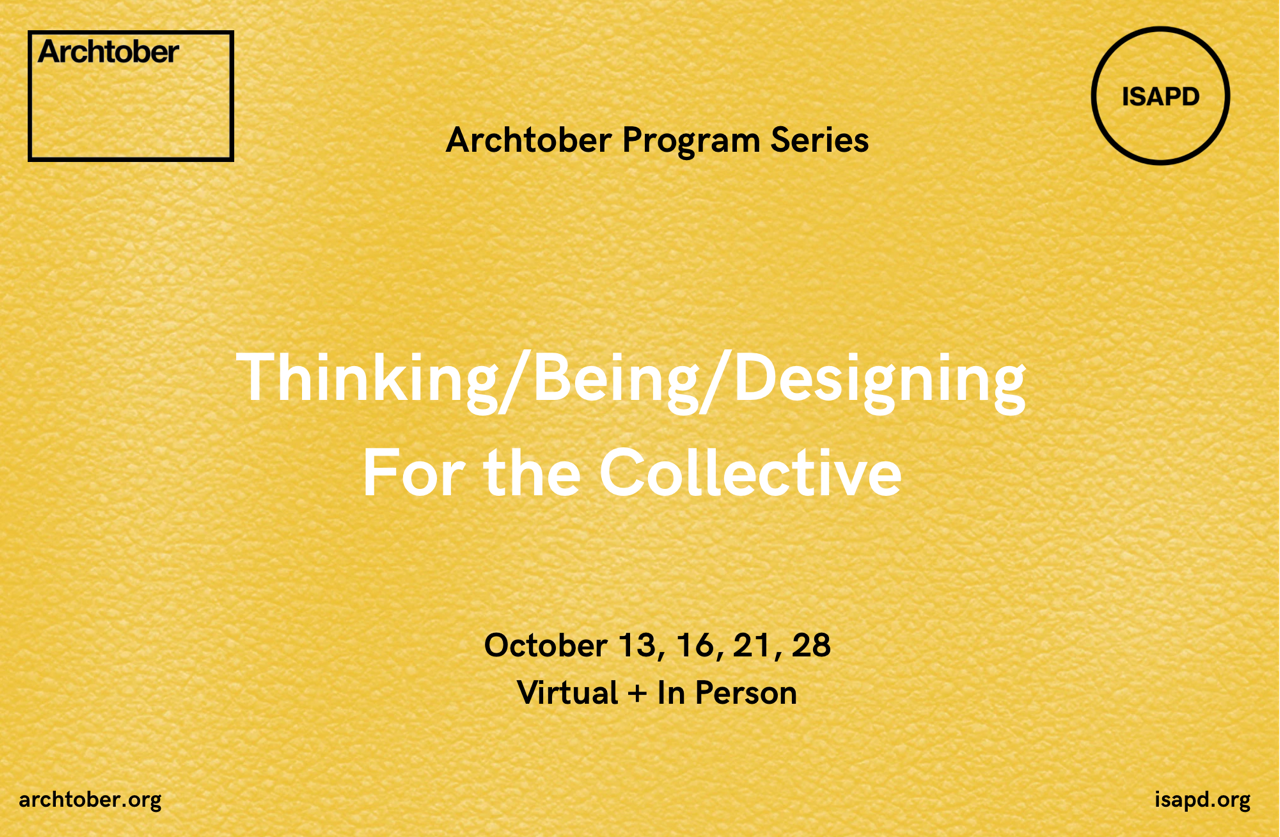













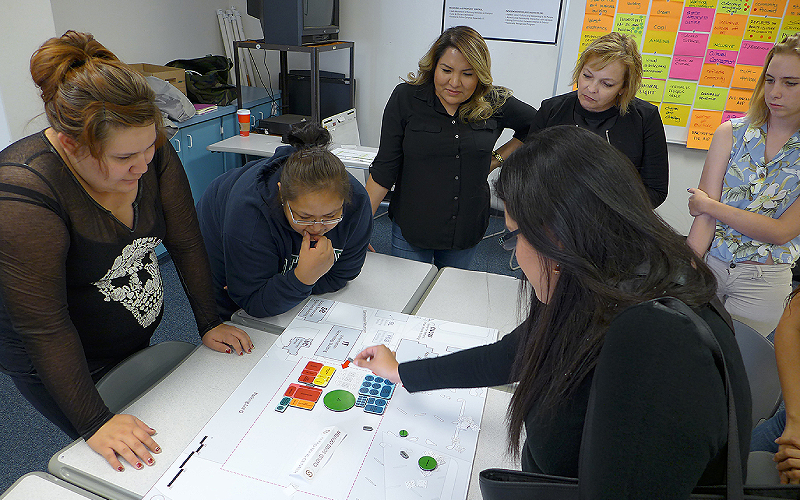
ASLA 2023 Professional General Design Honor Award. Cloud Song: SCC Business School + Indigenous Culture Center. Scottsdale, Arizona. Colwell Shelor Landscape Architecture.
Image Credit: American Society of Landscape Archtiects https://www.asla.org/healinglandandculture.aspx
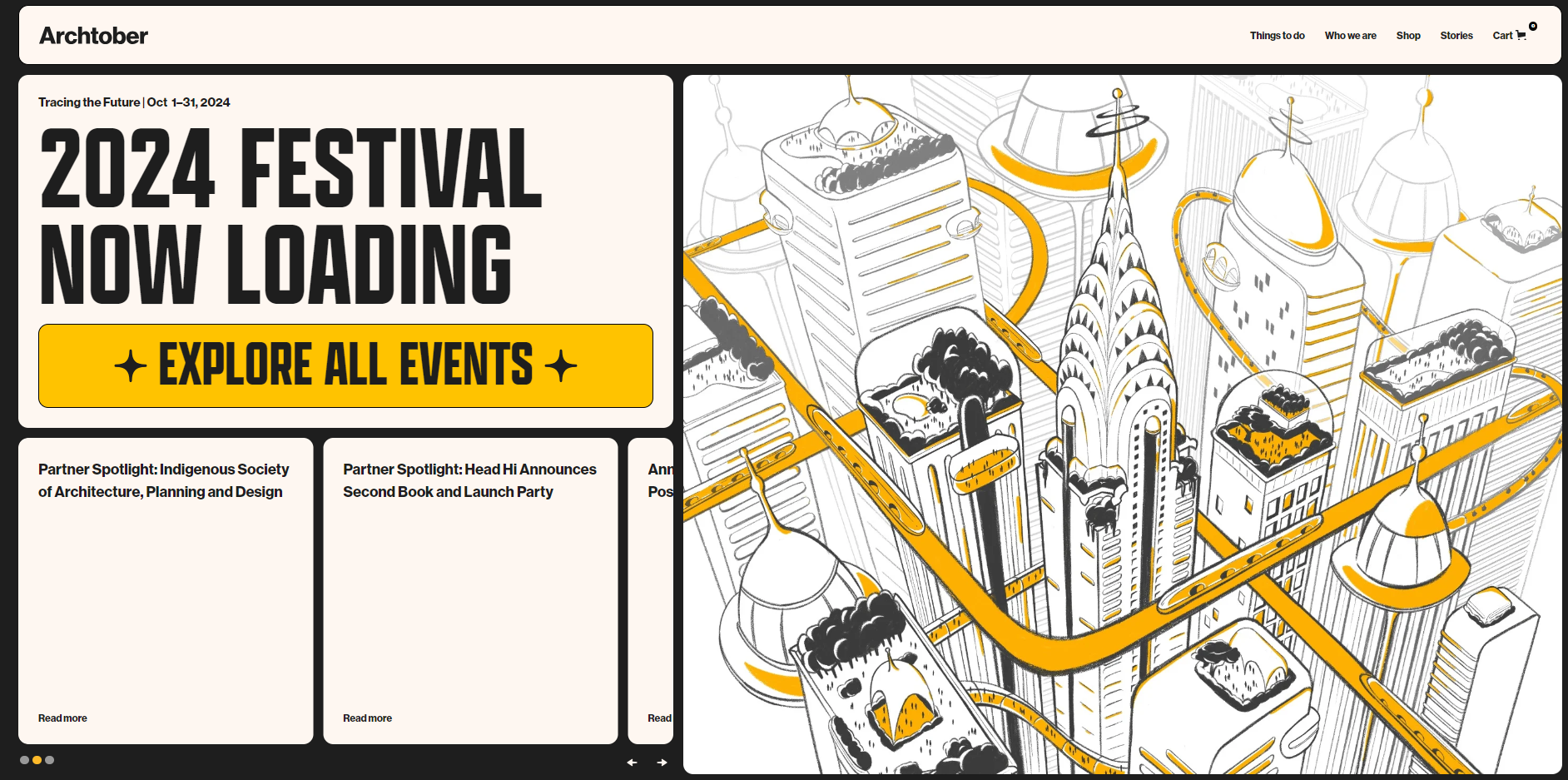
ARCHTOBER 2024 Event Calendar.
Image Credit: Screenshot of https://www.archtober.org/


Winona LaDuke.
Image Credit: https://www.winonaladuke.com/

Julia Watson
Wizipan (Wee-zee-pan) Little Elk Garriott

Christian Hart Nakarado


Celina Brownotter

Braiding Past, Present, & Future: Honoring Standing Rock Culture through Design, drawing by Celina Brownotter.

Bailey Morgan Brown Mitchell



Suzanne Kite. Image Credit: BANFF Centre

Tania Gutiérrez-Monroy

Christian Hart Nakarado


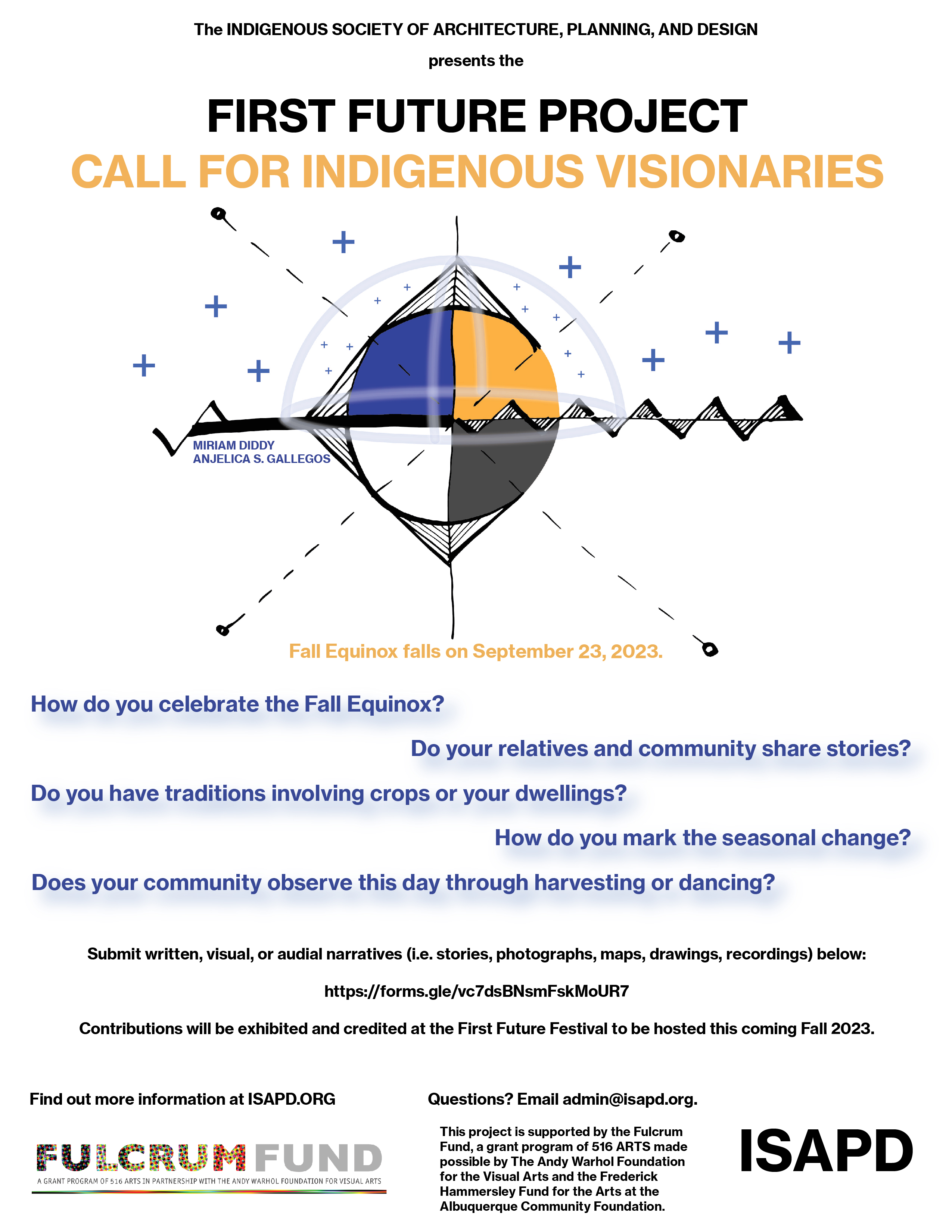




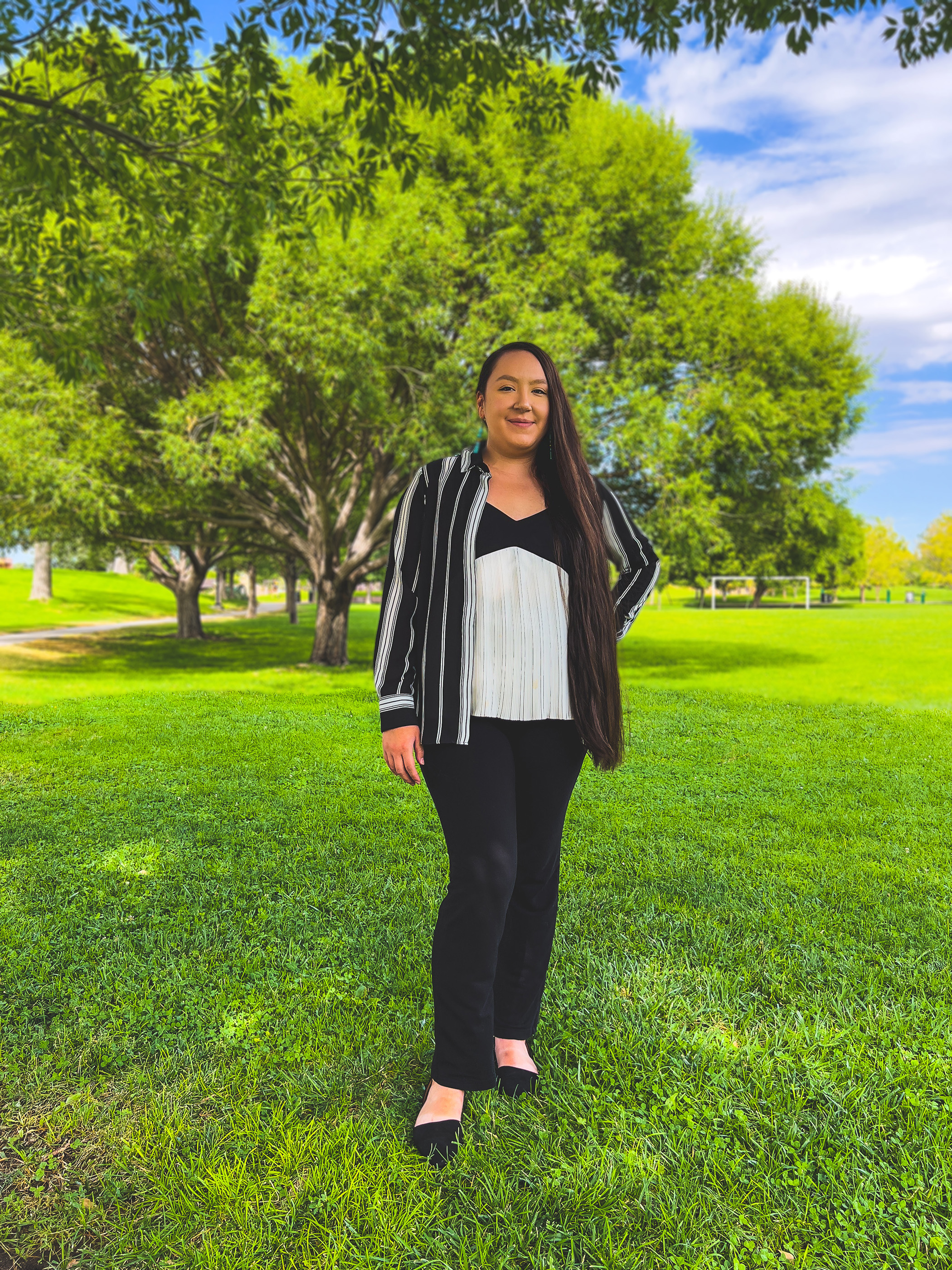
Miriam Diddy (Hopi + Navajo), AICAE, Planner, MRWM

Federal Indian Boarding School Initiative Investigative Report, U.S. Department of the Interior.
More here: https://www.bia.gov/service/federal-indian-boarding-school-initiative
 Wa-Di Housing Development - Santo Domingo Pueblo, AOS Architects. Image by Minesh Bacrania.
Wa-Di Housing Development - Santo Domingo Pueblo, AOS Architects. Image by Minesh Bacrania. 
